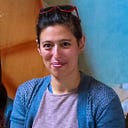The Power of Bioarchaeology
Danielle Kurin is a former assistant professor and tenured associate professor of anthropology at the University of California, Santa Barbara. She taught graduate and undergraduate courses in the department and supervised research in osteology, human evolution, bioarchaeology, and forensics. In 2016, Danielle Kurin wrote a book titled The Bioarchaeology of Societal Collapse and Reorganization.
Bioarchaeology is the study of human remains in an archaeological context, using techniques from archaeology and physical anthropology. It provides a unique window into the lives of past populations, offering insights into everything from funerary practices to health and disease, migration patterns, and subsistence strategies.
One of the key strengths of bioarchaeology is its ability to reconstruct the lives of individuals who lived in the past. By analyzing human remains, bioarchaeologists can determine things like age, sex, and health status, which can then be used to paint a more detailed picture of the population as a whole. This information can be used to understand past societies, cultures, and the environment they lived in.
Another important aspect of bioarchaeology is its ability to shed light on human-environment interactions. By studying the remains of animals and plants found in archaeological sites, bioarchaeologists can gain insight into how past populations used and managed their surroundings. This can be particularly useful for understanding how human societies have adapted to changing environmental conditions.
In short, bioarchaeology is a powerful tool that allows us to unlock the secrets of the past. It provides a detailed understanding of human societies and their interactions with the environment, enabling us to better understand our place in the world today.
